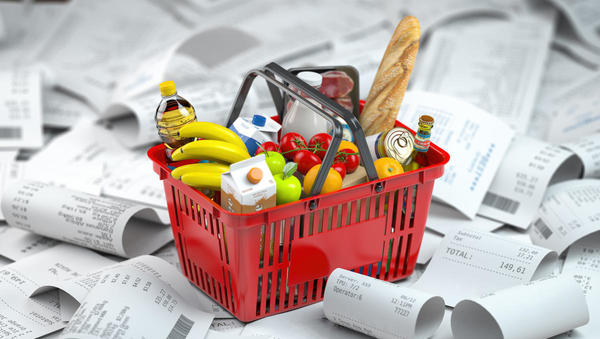After years of inciting inflation, which amounted to chants of rain conjuring in extreme drought, suddenly too many of the once coveted percentage points are now to be registered. Three percent in the euro zone, 4.1 percent in Germany: These alarm values trigger a heated debate .
Some argue with special factors: higher VAT, boom in demand after the lockdown, raw material shortages. But at some point it works like cumulative excuses. US economist Larry Summers belongs to the Mahner faction: “ The risks of inflation are underestimated – in the USA and globally .” It is like the end of the 1960s when inflation expectations gradually built up.
by email.
- Risk one: Due to rapid aging in industrialized countries, workers are becoming scarce. Then wages rise – and then prices. There is still no sign of this spiral.
- Risk two: The fight against the climate catastrophe causes high costs. Consumers feel higher CO2 prices directly for gasoline and heating fuels, which would have less of an impact if behavior changes, as desired.
- Risk three: The beneficial effect of unleashed globalization, in which competition has dampened prices, diminishes sharply in the course of economic wars and protectionism.
- Risk four: The galloping national debt is a problem when central banks have to move away from zero interest rates due to the risk of inflation. In any case, the ultra-lax monetary policy has led to an oversupply of capital, which in turn has resulted in extreme real estate prices.
There is only one thing worse than the fear of inflation at the moment: the fear of stagflation . High prices and little growth were the toxic mix of the 1970s. For the European Central Bank (ECB) , the guardian of money, a certain chain of effects is fatal: The more people talk about inflation, the higher it gets. The German board member Isabel Schnabel assures that one will “react decisively” if – beyond temporary fluctuations – inflationary pressure builds up, that endangers the target of two percent inflation. So far, however, there is no sign, according to Schnabel, that people are spending their high savings on a large scale. She firmly rejects the suspicion that the lowest interest rates would be retained as protection for the heavily indebted countries in southern Europe. As a precaution, we will describe where money is still safe – and where not .  A moral German foreign policy would have to provide sanctions against China, which a pragmatic foreign policy cannot afford. The economic ties are getting stronger, as the auto industry shows . Take Daimler, for example: If the truck subsidiary, which is heavily influenced by the US, is split off in Stuttgart on Friday, the high Asian dependency in the passenger car business will have a full impact. 32 percent of sales come from there. And with Geely and BAIC, Chinese are the most important Daimler – shareholders. The Volkswagen Group , whose parent brand almost 50 percent of the cars in China sold. BMW comes to 35 percent. And in 2022 the Munich-based company will become even more “Chinese”: Then they will take over the majority in the joint venture with Brilliance and consolidate 75 percent of the balance sheet. All are united by one thought, which the great reformer Deng Xiaoping described: “It doesn’t matter whether a cat is white or black – the main thing is that it catches mice.” From Berlin there are only nervous parade exercises before the coalition acquaintances -Coffee parties between Friday and Tuesday to report . The CSU mocks with some right that in addition to their own five members the CDU with a large contingent of ten people. Greens and FDP each need this man and woman strength, while the
A moral German foreign policy would have to provide sanctions against China, which a pragmatic foreign policy cannot afford. The economic ties are getting stronger, as the auto industry shows . Take Daimler, for example: If the truck subsidiary, which is heavily influenced by the US, is split off in Stuttgart on Friday, the high Asian dependency in the passenger car business will have a full impact. 32 percent of sales come from there. And with Geely and BAIC, Chinese are the most important Daimler – shareholders. The Volkswagen Group , whose parent brand almost 50 percent of the cars in China sold. BMW comes to 35 percent. And in 2022 the Munich-based company will become even more “Chinese”: Then they will take over the majority in the joint venture with Brilliance and consolidate 75 percent of the balance sheet. All are united by one thought, which the great reformer Deng Xiaoping described: “It doesn’t matter whether a cat is white or black – the main thing is that it catches mice.” From Berlin there are only nervous parade exercises before the coalition acquaintances -Coffee parties between Friday and Tuesday to report . The CSU mocks with some right that in addition to their own five members the CDU with a large contingent of ten people. Greens and FDP each need this man and woman strength, while the

The American problems of Allianz tightened yesterday. A New York judge admitted twelve lawsuits, including two class actions, against the German insurance company. His daughter Alliance Global Investors (AGI) had offered hedge funds as an investment, some of which had to be liquidated after the price slump in the pandemic. Investors are now demanding compensation. Jacqueline Hunt in future no longer deal with the ticking time bomb . It will now be inherited by Andreas Wimmer, 47, a homegrown man, most recently head of Allianz Leben. CEO Oliver Bäte has also made the US fiasco a top priority. My cultural tip for the weekend: “Radicalized conservatism” by Natascha Strobl , a quick analysis of the flirtation of large conservative parties with the New Right and a “raw bourgeoisie”. This comes here as a result of the growing importance of social media, with Sebastian Kurz and Donald Trump as prototypical figures. The rule break is the campaign, polarization is the content, the “I, I, I” is the leadership style. In the politics of the 21st century, the narrative and the feelings associated with it count, writes Strobl. The political scientist provides clues to those who are wondering how things will continue in the middle of Germany after the Union debacle – and whether “conservatism” would be strong again if we only build nuclear reactors, collectively bring young people to arms, close borders and women in the kitchen and church would send back.

And then there is the Austrian crystal specialist Swarovski, who is experiencing a revolt after almost 130 years. Two representatives of the owner dynasty let it rattle and pop in a town hall meeting yesterday – and promised to withdraw immediately . After management chaos and deteriorating balance sheet quality, the authority of CEO Robert Buchbauer and CFO Mathias Margreiter was gone. As an interim solution, the new CEO Michele Molon, who comes from the house, but not from the family. His successor is being sought – externally. Previously there had been an uprising against the old leadership duo in Wattens near Innsbruck. Twelve family members, who hold 40 percent of the shares, stated in writing: “Unencumbered by family policy and conflicts of interest, we demand the appointment of a CEO and CFO from outside the family from January 1, 2022 at the latest.” Swarovski separates from its in-house airline Tyrolean Jet Services. The family managers pushed out of office could be the same as Karl Kraus: “You could become megalomaniac: you are so little recognized.” I wish you a relaxing weekend with a lot of appreciation. Greetings you warmly
Your
Hans-Jürgen Jakobs
Senior Editor You can subscribe to the Morning Briefing here:
Note: This article have been indexed to our site. We do not claim legitimacy, ownership or copyright of any of the content above. To see the article at original source Click Here












